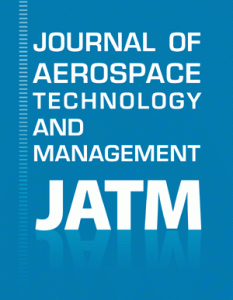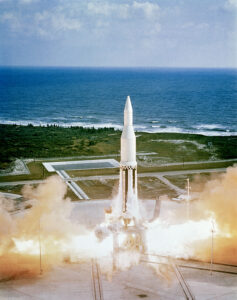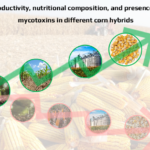By Rosa Moraes, Scientific Journalist, Linceu Editorial, São José dos Campos, SP, Brazil
Scientists Dale L. Johnson and William W. Vaughan of NASA Marshall Space Flight Center (Retired) developed an essential manual for building and applying Natural Environment (NE) design criteria to launch vehicles design and development. The study published by the Journal of Aerospace Technology and Management (vol. 11 and 12), proposes guidelines for collecting data and defining the specific Natural Environment, acting as a guide for the formation and application of knowledge of environmental factors — Terrestrial and Spacial — that should influence on the operations and missions of the space vehicles.
The subject is dealt with in three papers: In the first part, entitled “The Role of Terrestrial and Space Environments in Launch Vehicle Development”, the authors analyze the influence of these natural environments on all aspects of launch vehicles; their structures and the systems associated with them. At this time, special emphasis is placed on the importance of good alignment between the engineering team and NE researchers’ team, focusing on the setting of design guidelines. The main factors to be observed as sources for the projection of each Natural Environment are introduced in this stage.
The second part of the study, called “Key Terrestrial and Space Environment Sources”, goes deeper into the environmental impacts that affect the vehicle, analyzing the issues that must be addressed during the conceptual stage of the project, bringing a series of Rules of Thumb that must be carefully observed in each scenario. In this step, the criteria guidelines for applying the NE to the spacecraft/aircraft design are presented to optimize its functions, improve the system and minimize the risks and costs of the program. The article distinguishes between the terrestrial environment (0 – 90 km altitude) and the space environment (orbital altitudes of the Earth), relating the occurrence of environmental phenomena and their specific effects in each part of the vehicle systems and subsystems, during each new phase of the mission.

Image: NASA.
As the wind is the most important atmospheric parameter when considering the design of a launch vehicle, the third part, “The wind environment interactions relative to launch vehicle design”, published in the journal Journal of Aerospace Technology and Management (Vol. 12), brings considerations about the effects of aerodynamic loads produced by the wind, which are very significant both on the launch pad stage and on in-flight, and therefore have a major impact on the design of vehicle configurations.
In clear and detailed language, the article provides guidance on the characteristics of the different profiles and wind loads, with models and examples, exposing the possible risks and critical points in each environment. The effects of wind on the vehicle’s guidance system and the vehicle’s control system are analyzed separately.
For the analysis of Wind-Vehicle aerodynamic loads, an alternative to Monte Carlo-type statistical analysis is presented. The study describes the main wind disturbances used to calculate the aerodynamic load and analyzes the advantages and disadvantages of each method.
Model examples of the application of NE in the development of aircraft engineering are presented in detail, with the application of the parameters found and their effects. The use of wind models and atmospheric models is also largely addressed in the article, illustrated with graphs and tables.
It is important that this work gets set from the early concept stages of the program, enforcing the recommendations by Anderson and Smith (1994): “Assessments made early in the development program will prove advantageous in maintaining an economical program and obtaining a vehicle with minimal operational sensitivity to the environment”.
Also, the article provides a substantial bibliography to guide the NE team in managing and interpreting the information obtained by observing the environmental peculiarities and the relative specific requirements defined or desired about the natural environment, for the implementation of the parameters which will define the design criteria in order to compose the Environment Design Criteria document, to be applied to the system requirements protocol in all phases of operation and flight.
References
ANDERSON. B.J. and SMITH, R.E. Natural orbital environment guidelines for use in aerospace vehicle development (TM-4527). NASA Technical Memorandum, 1994.
To read the article, access it
JOHNSON, D.L. and VAUGHAN, W.W. The Wind environment interactions relative to launch vehicle design. J. Aerosp. Technol. Manag. [online]. 2020, vol. 12, e0220, ISSN 2175-9146. [viewed 13 March 2020]. DOI: 10.5028/jatm.v12.1090. Available from: http://ref.scielo.org/t429jp
External link
Journal of Aerospace Technology and Management – JATM: <http://www.scielo.br/jatm>
Como citar este post [ISO 690/2010]:


















Recent Comments